
Sweetcorn Disease Nursery Home
 Sweetcorn Disease Nursery Home |
Sweet Corn Disease NurseryStewart's Bacterial Wilt, Erwinia stewartii |
Inoculation Techniques
Erwinia stewartii is maintained over winter plants of resistant and susceptible hybrids grown in the greenhouse. At the beginning of each summer, an early planting is inoculated to maintain the bacterium for subsequent inoculations.
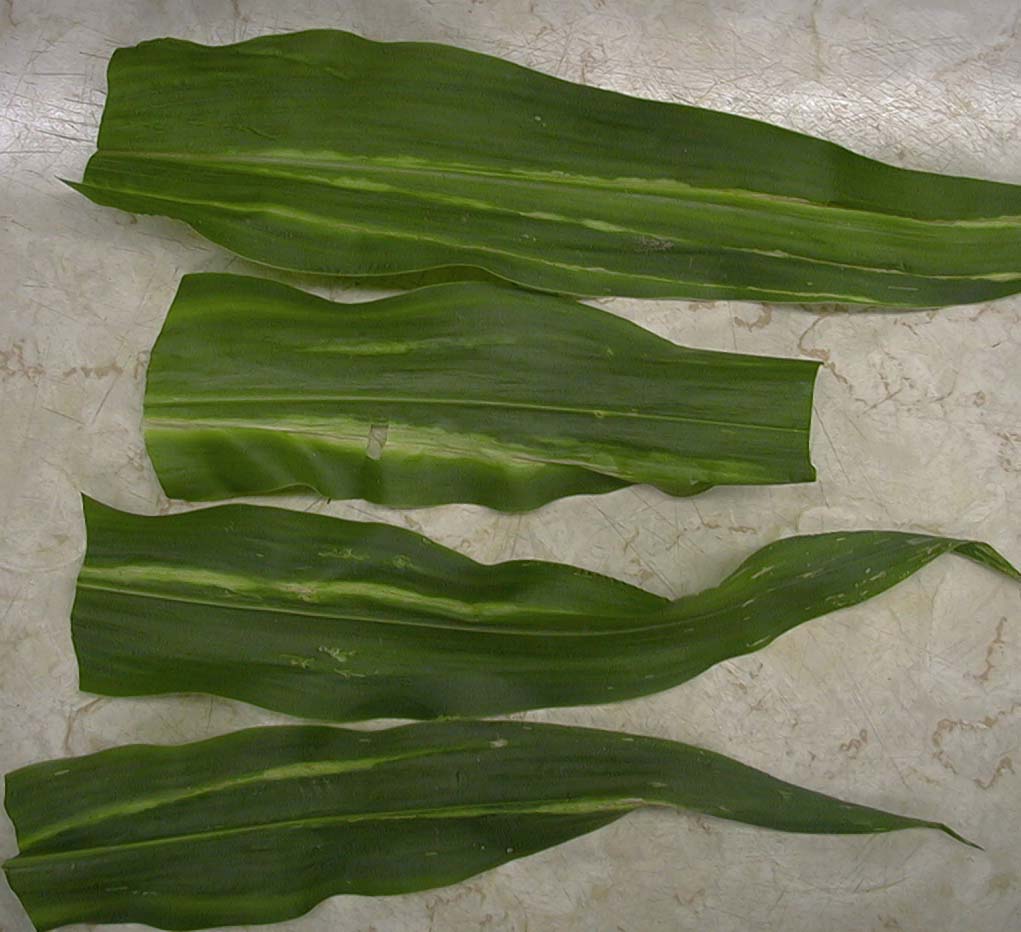 |
Symptomatic leaves are collected and washed under tap water to remove dirt and other microscopic contaminants.
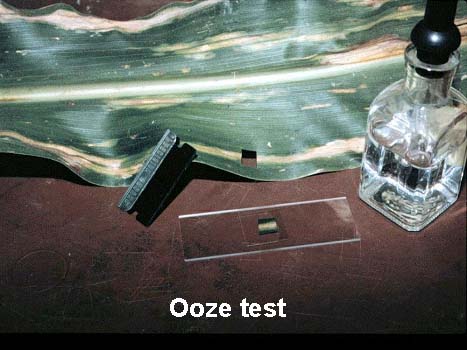 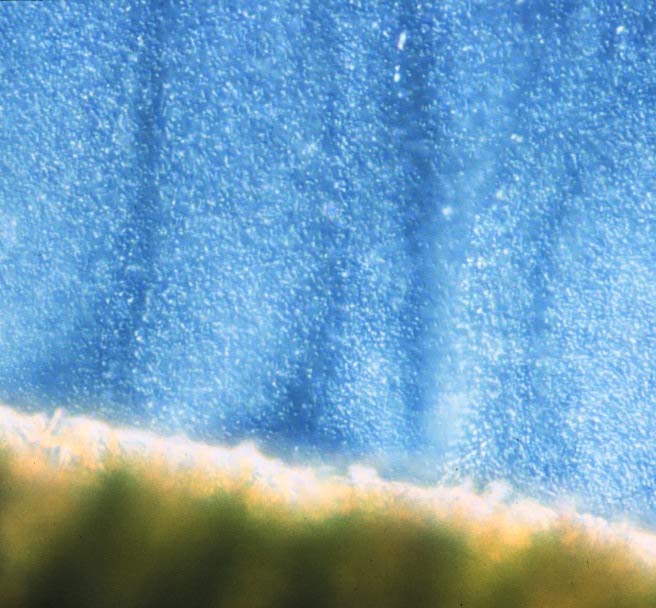 |
Symptoms of a few leaves are tested for bacterial ooze.
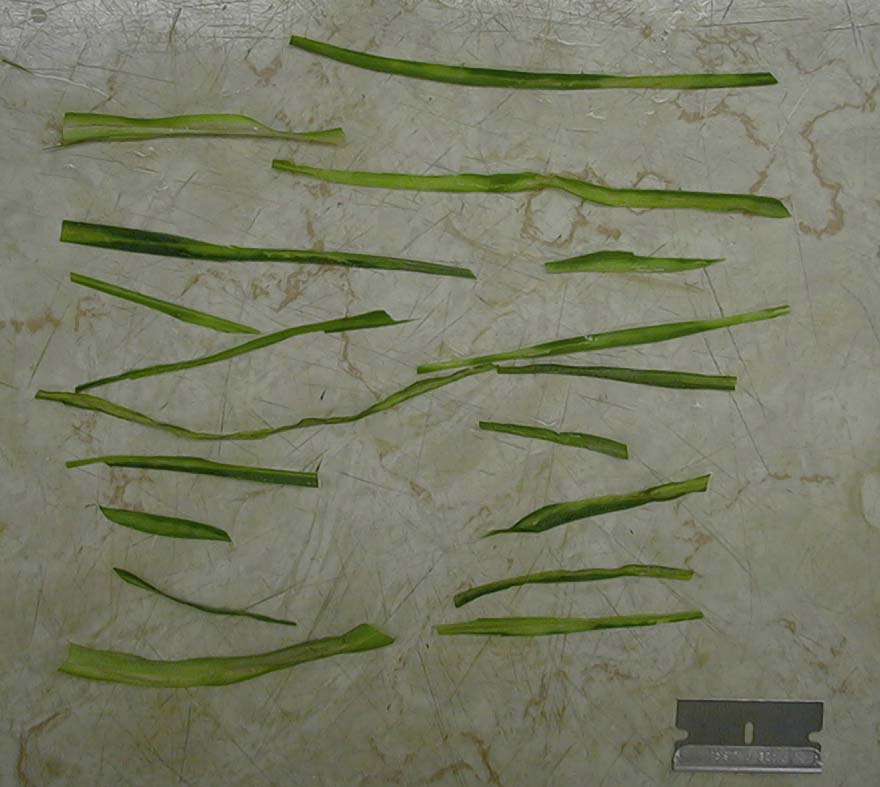 |
Symptomatic sections of leaves are excised and surface sterilized for 2 to 3 seconds in 10% Clorox.
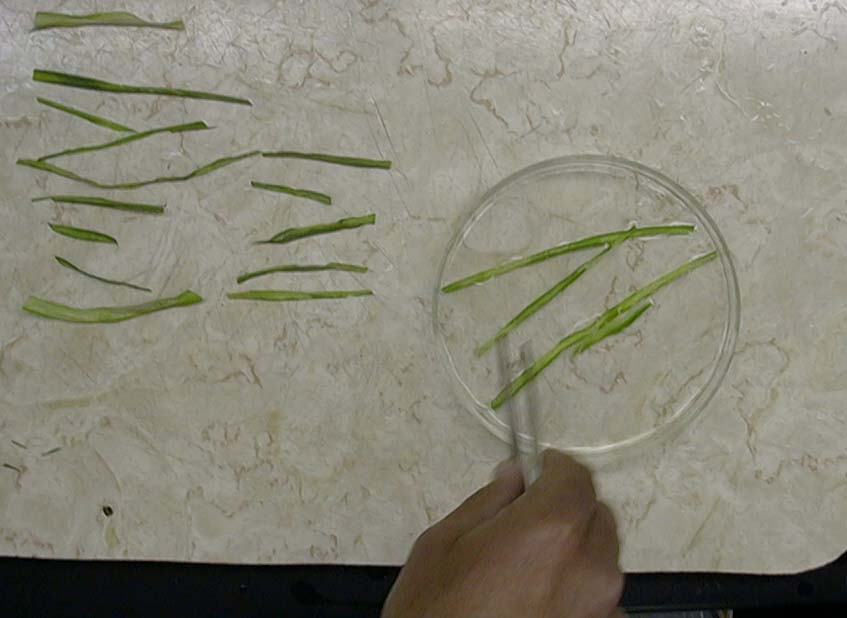 |
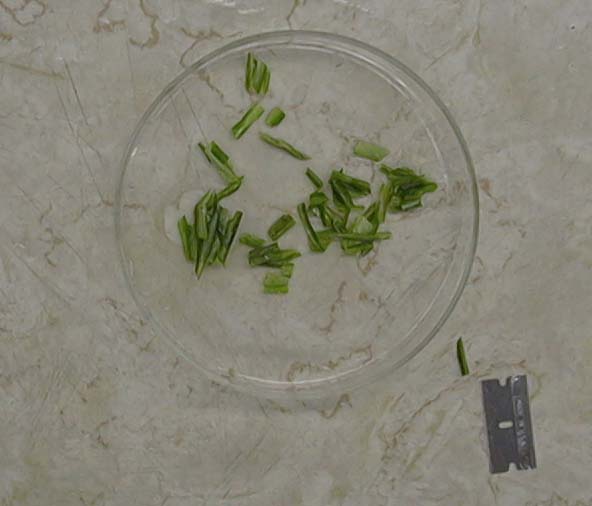 |
Surface sterilized leaf tissue is rinsed in sterile water and cut into 1.3 to 1 cm. pieces.
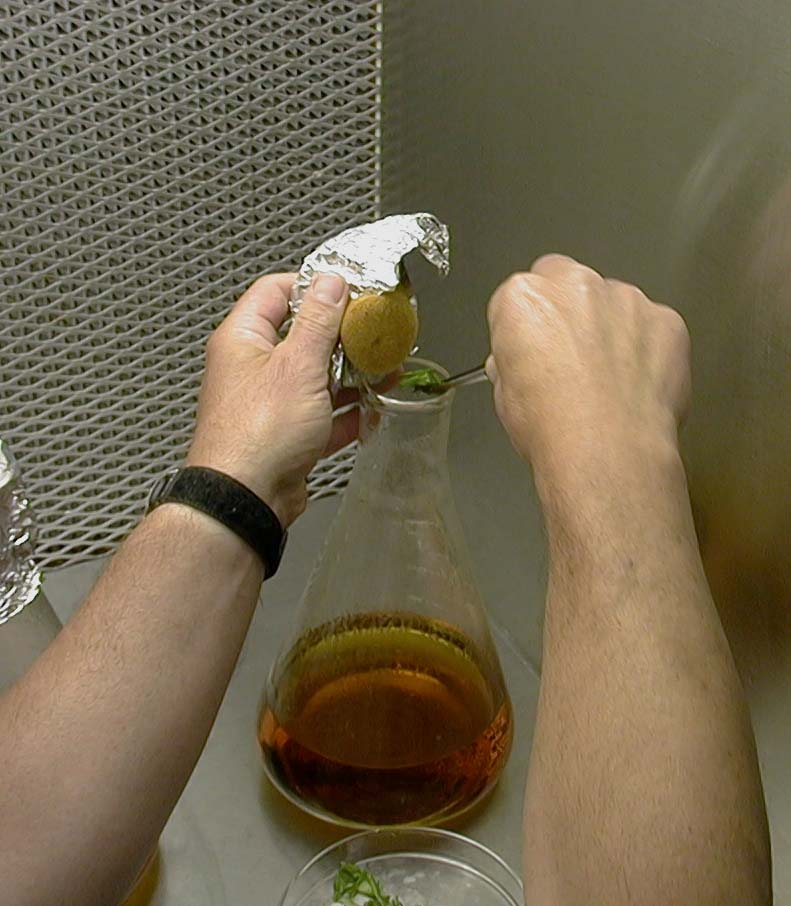 |
Sterile nutrient broth is seeded with 10 to 20 pieces of surface-sterilized, symptomatic leaf tissue.
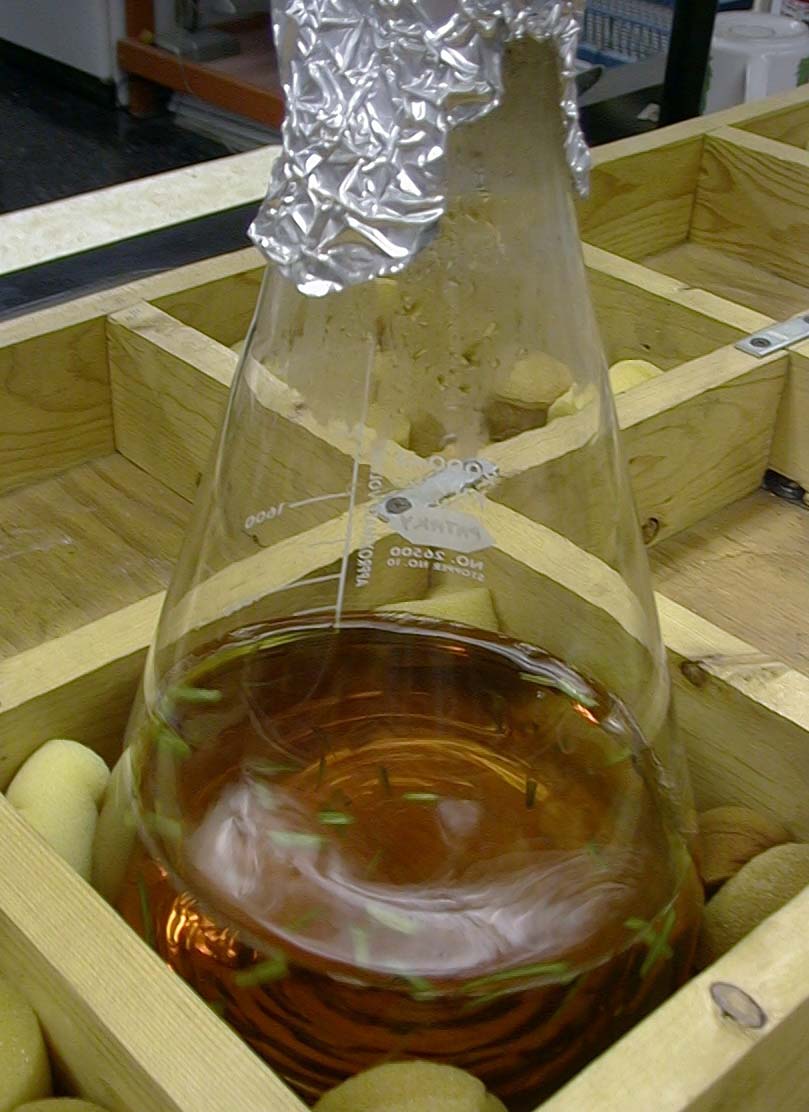 |
Nutrient broth cultures are incubated on a shaker at room temperature.
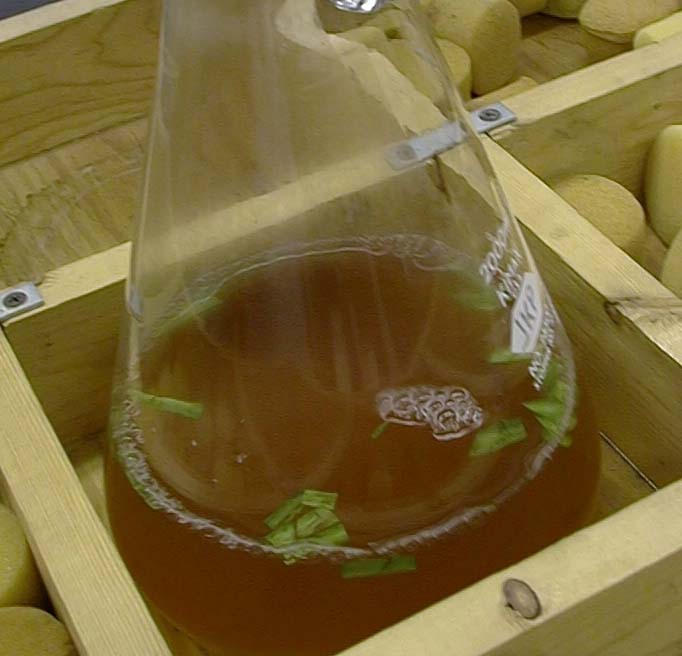 |
Shake cultures are ready to use as inocula after 12 to 20 hours incubation.
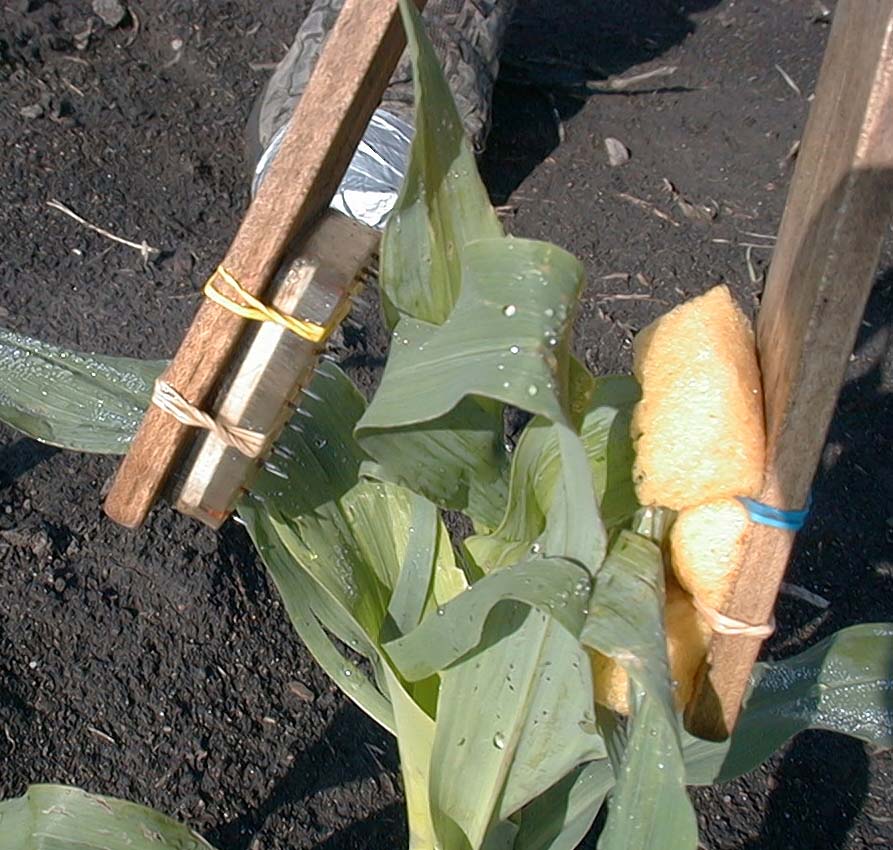 |
Inoculum is diluted (about 10:1) with a 0.1 M saline solution (5.8 g NaCl per L of water) and used immediately. Leaf whorls of seedlings are inoculated using "clappers". Leaves are wounded with needles attached to one arm of a "clapper". Inoculum is introduced to wounds from a sponge attached to the other arm of the clapper.
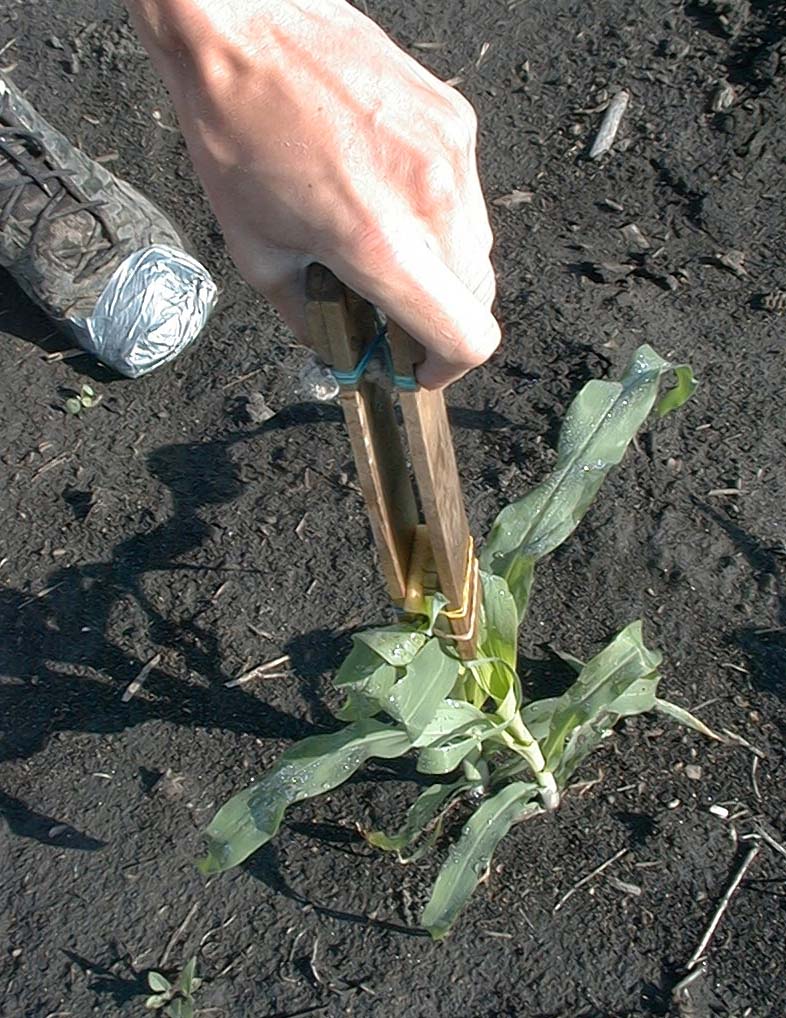 |
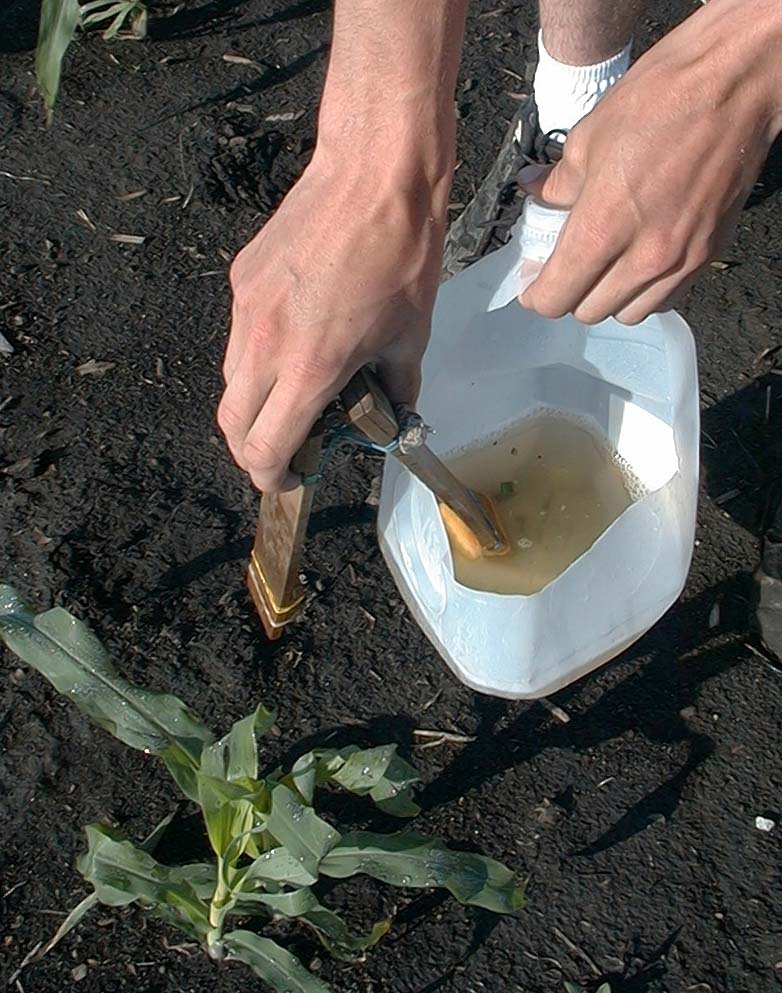 |
Each whorl is "clapped" about 3 to 5 times and sponges are dipped into diluted inocula every 2 to 3 plants.
Since "clappers" are used to stimulate the activities of corn flea beetles, it helps to make noises like "beatles" when inoculating plants with E. stewartii. Some of our favorite beatle noises are "While My Guitar Gently Weeps," Drive My Car," and "Twist and Shout."
 |
Back To Sweetcorn Disease Nursery Homepage
![]() Department
of Crop Sciences
Department
of Crop Sciences
![]() College
of Agricultural, Consumer, and Environmental Sciences
College
of Agricultural, Consumer, and Environmental Sciences
![]() University
of Illinois at Urbana-Champaign
University
of Illinois at Urbana-Champaign